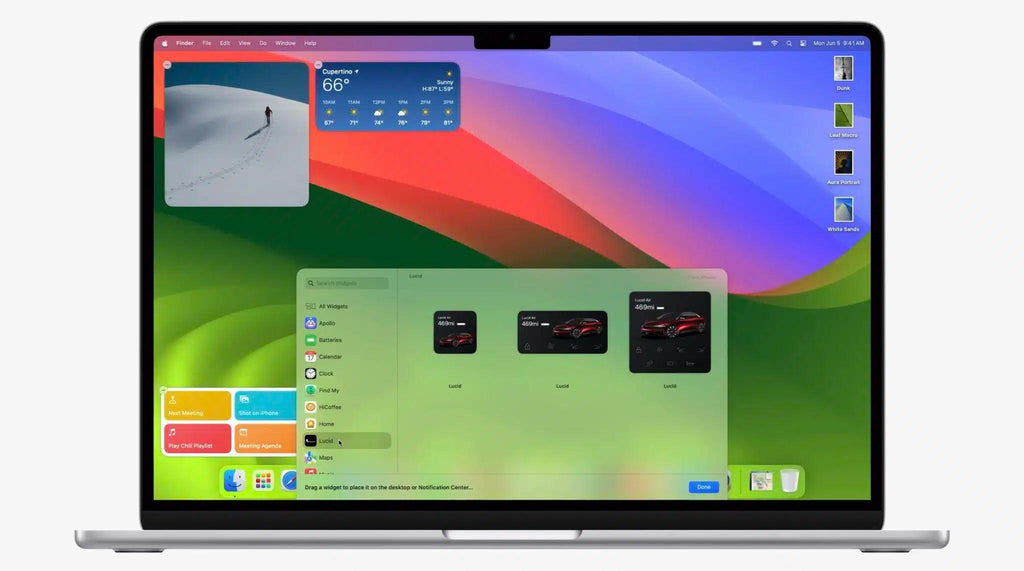Apple has recently launched its latest major software updates, which bring new features to Apple Home users through iOS and iPadOS 17, watchOS 10, and tvOS 17.
Introducing StandBy.
Apple introduces a new bedside mode for the iPhone with this feature. When the iPhone is placed horizontally and charging, it displays a clock, photos, or widgets. Additionally, Apple Home devices can be easily configured for quick access in this mode.

Record of Activities for HomeKit Devices.
Previously, users had to depend on the manufacturer's apps to view the history of individual accessories, assuming the devices even offered this capability. However, with iOS 17, this situation is expected to improve, albeit partially. Now, within the Apple Home app, users can access activity logs for garage doors, door locks, security systems, and contact sensors. However, it's important to note that the range of supported devices is quite restricted, with Apple primarily emphasizing security-related accessories. For those interested in viewing temperature trends or power consumption data in graphical form, reliance on the manufacturer's apps will still be necessary.
To begin recording these values, you first need to enable the activity history feature. To access the corresponding setting, ensure that your Home Hubs are updated to the latest software version. Open the settings for your home in the Apple Home app.

Then, proceed to the "Safety & Security" settings and toggle the "Activity History" option to activate it. Keep in mind that the recorded data will be stored for one month.

To access the activity history, navigate to the main page of the Apple Home app and activate the "Security" filter. Once activated, the activity history will appear as the first entry among the sensors.

Once opened, you'll find a list of activities for garage doors, door locks, security systems, and contact sensors from the past month.

Updates to the Apple Home app and Matter Integration.
Enhancements to the Apple Home app include a refined design. Notably, the device view background is now transparent instead of white, certain values and selection wheels have been enlarged, and there's a fresh color palette for lamps. While not as revolutionary as the transition from iOS 15 to iOS 16, these changes are noticeable and contribute to a more modern appearance for the Apple Home app.

Regarding Matter, Apple plans to incorporate two widely used HomeKit functions into the new Smart Home standard: the ability to unlock door locks via tapping or PIN codes in the future.
(Hey) Siri.
In the future, activating Siri will be even simpler. While previously you needed to say 'Hey Siri', with iOS 17, just saying 'Siri' will activate Apple's voice assistant. Initially, this feature without 'Hey' will be available only in English and must be manually activated in the settings.

New Apple Watch App.
The Apple Watch's Home app underwent a comprehensive redesign with watchOS 10 to align with the design of the iPhone, introduced with iOS 16. Users now have access to compact camera views and can filter devices and scenes based on climate, light sources, security, and speakers & TVs.

Lockscreen widgets for iPad.
With iPadOS 17, you can now view live activities and widgets directly on the lock screen of your iPad. This functionality, which has long been available on the iPhone, enables users to access their Apple Home devices directly from the lock screen of their iPad.

Desktop Widgets for Mac.
In the future, accessing widgets on the Mac will be even quicker with the ability to place them directly on the desktop. A new addition is the Apple Home Widgets section in the Widgets Gallery, which was previously absent on the Mac. Until now, integrating HomeKit devices into widgets on the Mac required third-party apps like Controller for HomeKit.

New control center for AppleTV.
With tvOS 17, your living room will receive an upgraded Control Center. One of its key features is providing even faster access to your Apple Home cameras directly through your TV.






